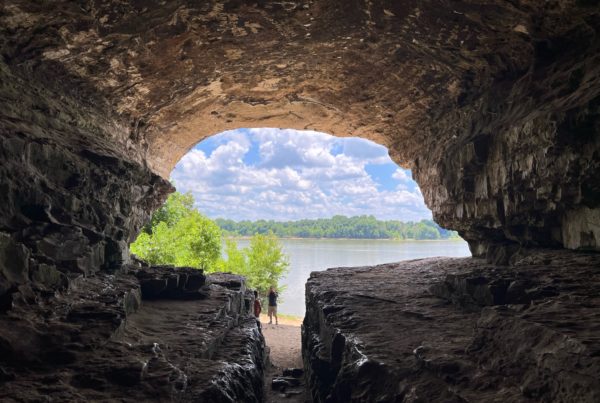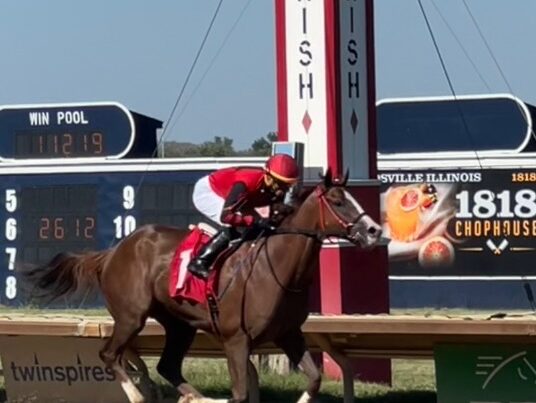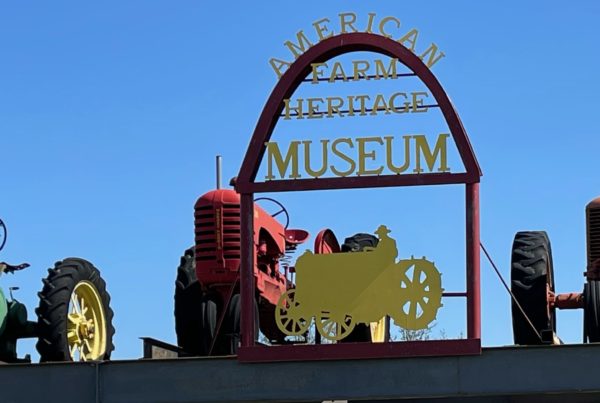I’m not much for traveling with large groups, therefore, you’ll seldom see me on the road with more than a few good buddies or my wife. So, when I saw a poster proclaiming the “Kaskaskia Cahokia Trail (KCT) Second Road Rally”, it normally would not have “moved my needle”. But in this case, just a few weeks ago I had ventured accidentally over about 20 miles of the southern end of this age-old path on a trip to Fort de Chartres and Chester, Illinois and found myself wanting to see more.
The KCT runs from the current town of Cahokia south to Illinois’ original Kaskaskia Village. The Trail passes through portions of St. Clair, Monroe and Randolph counties.
The route with the KCT “signs”, stays mostly atop the bluffs and has frequent scenic views of some of the lushest farmland in the world: the American Bottoms, which lie between the bluff and the Mississippi River. Occasionally, the Rally drops off into the Bottoms past a wonder of nature or historic site.
But back to the Rally. It featured a leisurely day of travel and included 12 pre-selected stops that included a good cross-section of the region’s history.
The way I travel, combining some of the “new” with lots of “old”, I figure there are about 60 significant sites worth seeing scattered along this trail. In a couple of weeks, you can read about more of those on my blog, TwoLaneRambler.com and based on a multiple-day trip throughout Monroe County, Illinois.
Holy Family Church – Cahokia, IL
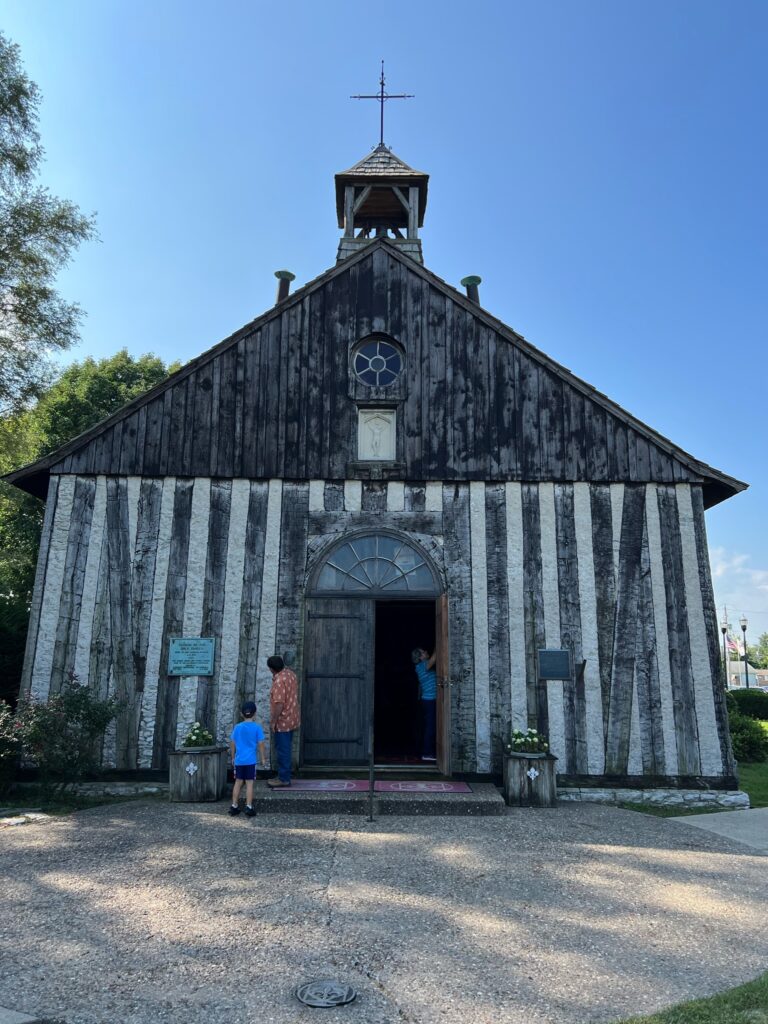
As you enter Cahokia from the I-255 loop around the east side of the St. Louis Metro area, take IL Hwy 157 to reach the Holy Family Church & Parish Museum at 116 Church Street.
At that point, you can tour the church and the Jarrot Mansion, which is next door. Rally staff was on hand to welcome Rally-ers, present them with a “goodie” bag, a T-shirt, necessary info for the day and a passport, which participants could have stamped at each location and entered in a drawing at the end of the day.
Holy Family was established in 1699 and is the oldest continuous Catholic Parish in the United States and the oldest church west of the Alleghany Mountains. The present log church was dedicated in 1799 and is open for tourists and worshippers.
Jarrot Mansion – Cahokia, IL
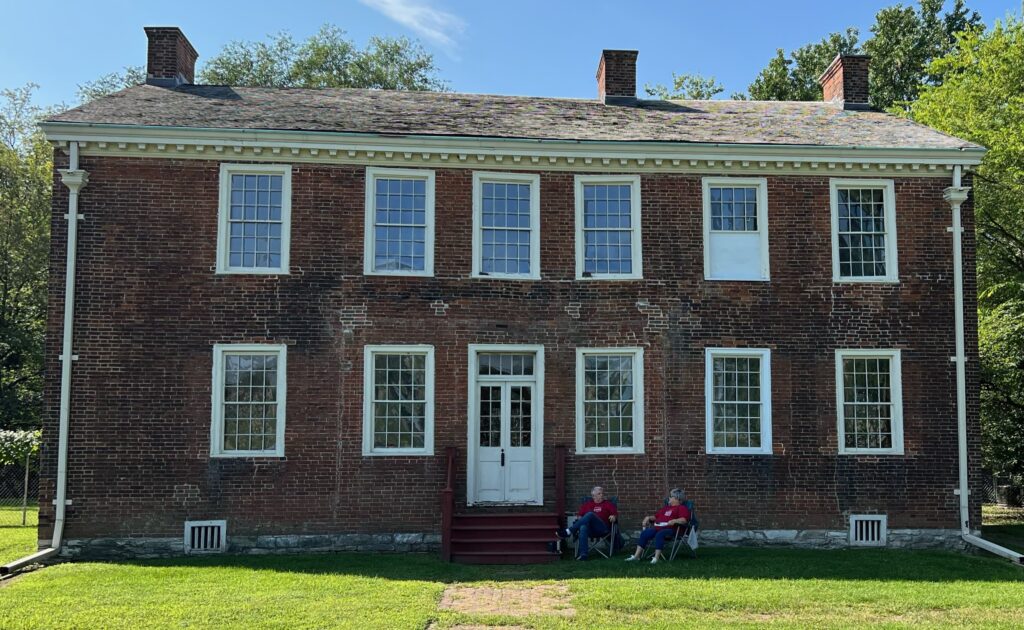
The Jarrot Mansion is a brick home completed in 1810, making it one of the oldest surviving masonry structures in Illinois. Although not open for viewing, a peek in the entry windows of the American Federal architectural designed home revealed a well-preserved interior. The mansion was built by slaves at the direction of Nicolas Jarrot, a refugee of the French Revolution, who arrived in Cahokia in 1793 and became a prosperous local merchant.
Sand Bank School – Columbia, IL
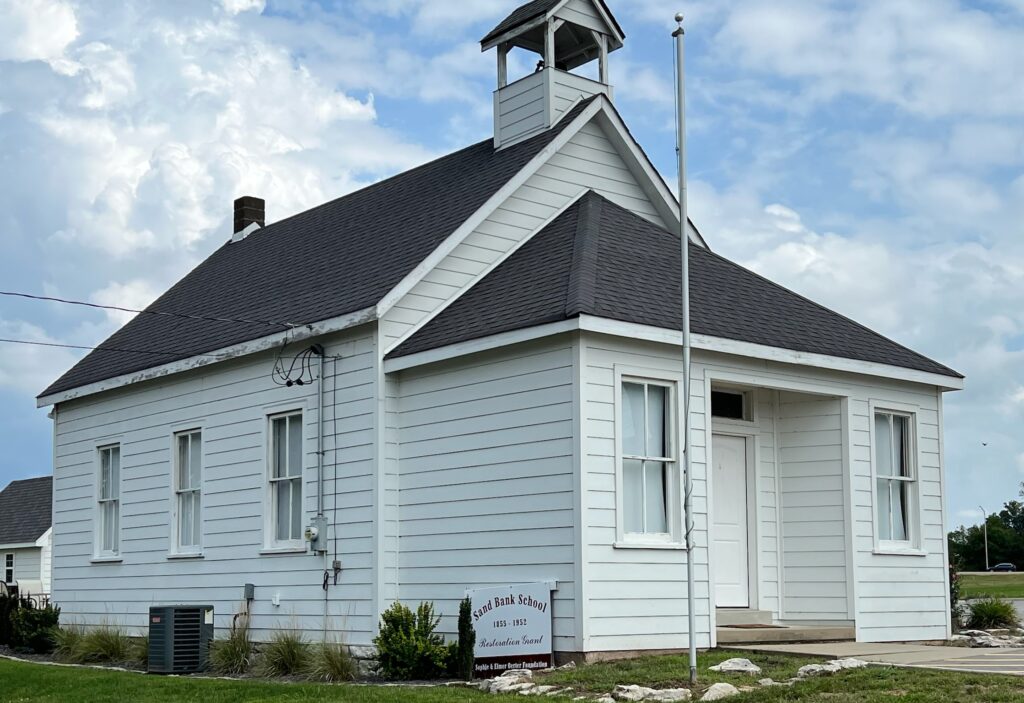
Entering Columbia from the north at Exit 6 off of I-255, take a right turn to 11832 Bluff Road and find the Sand Bank School. The first English-speaking school in Monroe County opened in a log cabin in 1783. In 1817, the first Sand Bank School was constructed by Revolutionary War veteran James Piggot.
The current one-room school was built in 1855 and was in use until 1952. In recent years it has been restored and is in use for small parties, wedding receptions and other events.
Eagle Cliff Cemetery/Miles Mausoleum – Near Waterloo, IL
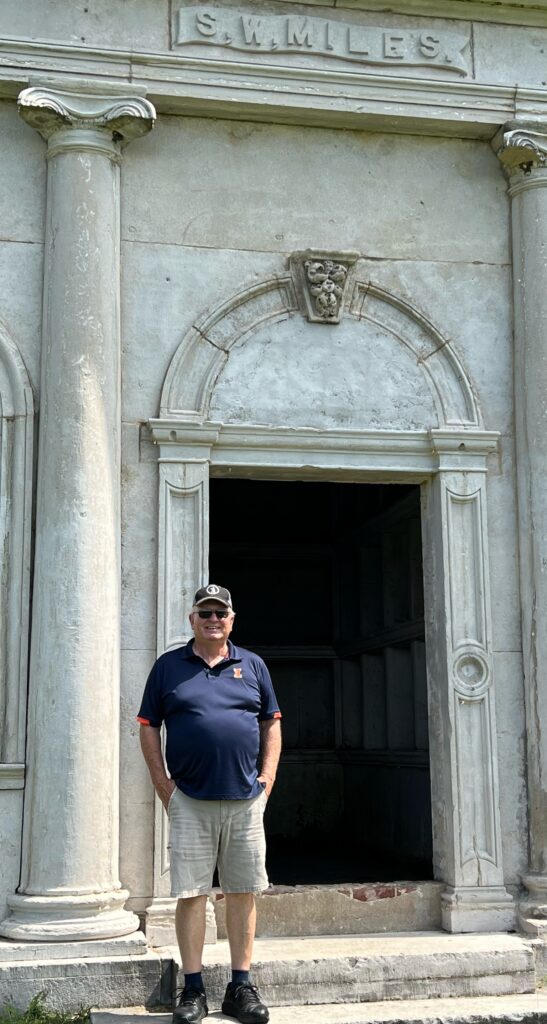
I found the Eagle Cliff/Miles Cemetery outside of Waterloo (7747 D Road) to be of great interest. Perched atop a hill it has a terrific view to the west all the way to Missouri. The cemetery is home to the Miles Family mausoleum, a structure that is in good shape today and open for viewing. Vandals created problems over the years until all the internees were removed and the building then left open.
Being a native son of Bond County, Illinois, I found this cemetery of particular interest, because it contained the grave site of Shadrach Bond (1773-1832), a Revolutionary War soldier and first governor of Illinois and the namesake of my home county.
Bond came to Illinois in 1794 and farmed. He was elected as the first territorial delegate from Illinois and served in both the 12th and 13th Congresses. In 1818, he was elected governor. During his term the capital was moved from Kaskaskia to Vandalia and a state banking system was established.
Community Heritage Society Museum – Valmeyer, IL
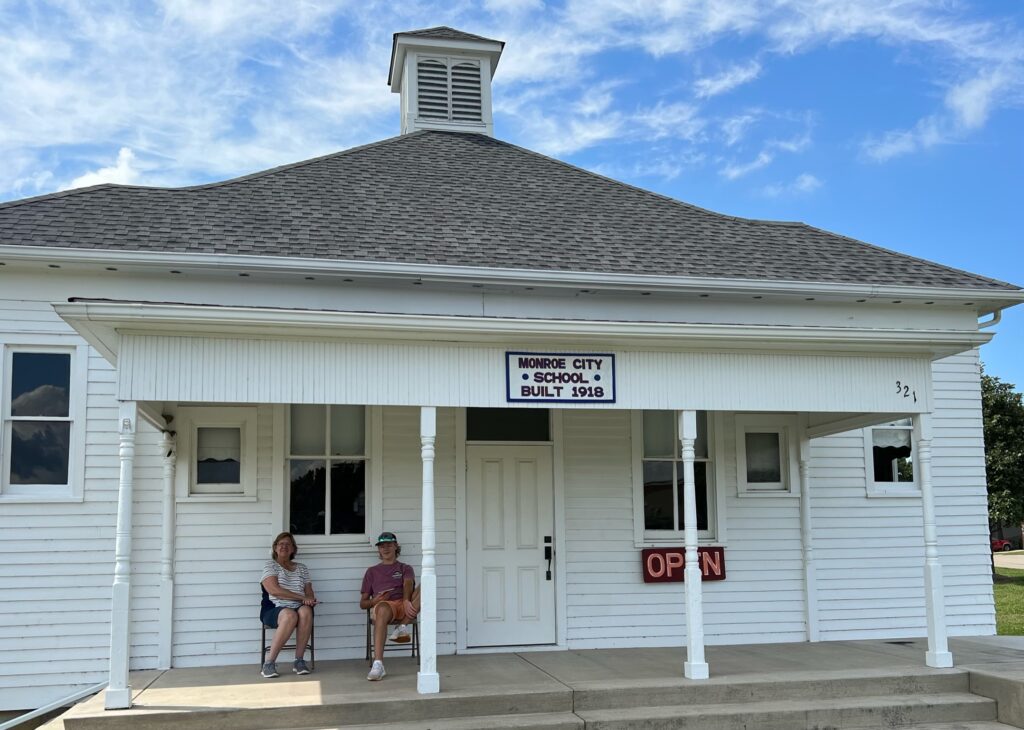
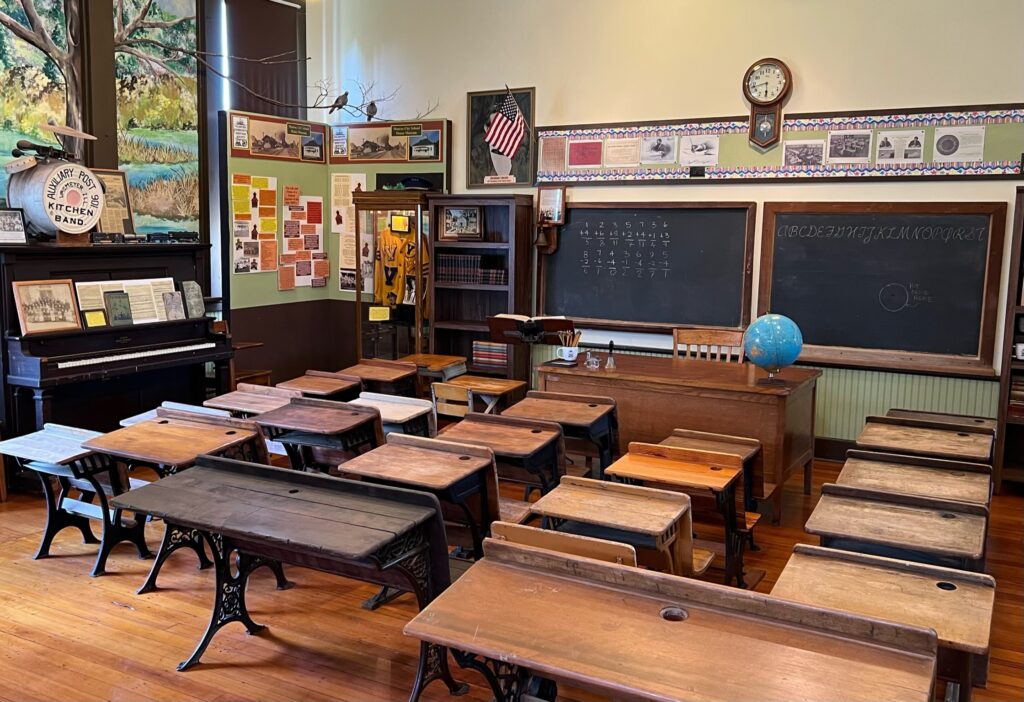
The next stop was the Monroe City school, a 1918 one-room structure that has been restored and moved to the heart of the village of Valmeyer. Entering is like stepping back into my youth, since I once attended a one-roomer. But this one also has several nice historic displays telling the story of the community, especially the Great Flood of 1993.
That disaster wiped out the former location of Valmeyer, but residents banded together to re-build their town four miles away on the bluffs where they can forever be high and dry.
A drive through town reveals the oddity of a village having no buildings older than 30 years old. The streets are wide and all have curb and guttering and there is no wiring allowed above ground. About two dozen houses remain in the old town down the bluff.
Maeystown, IL
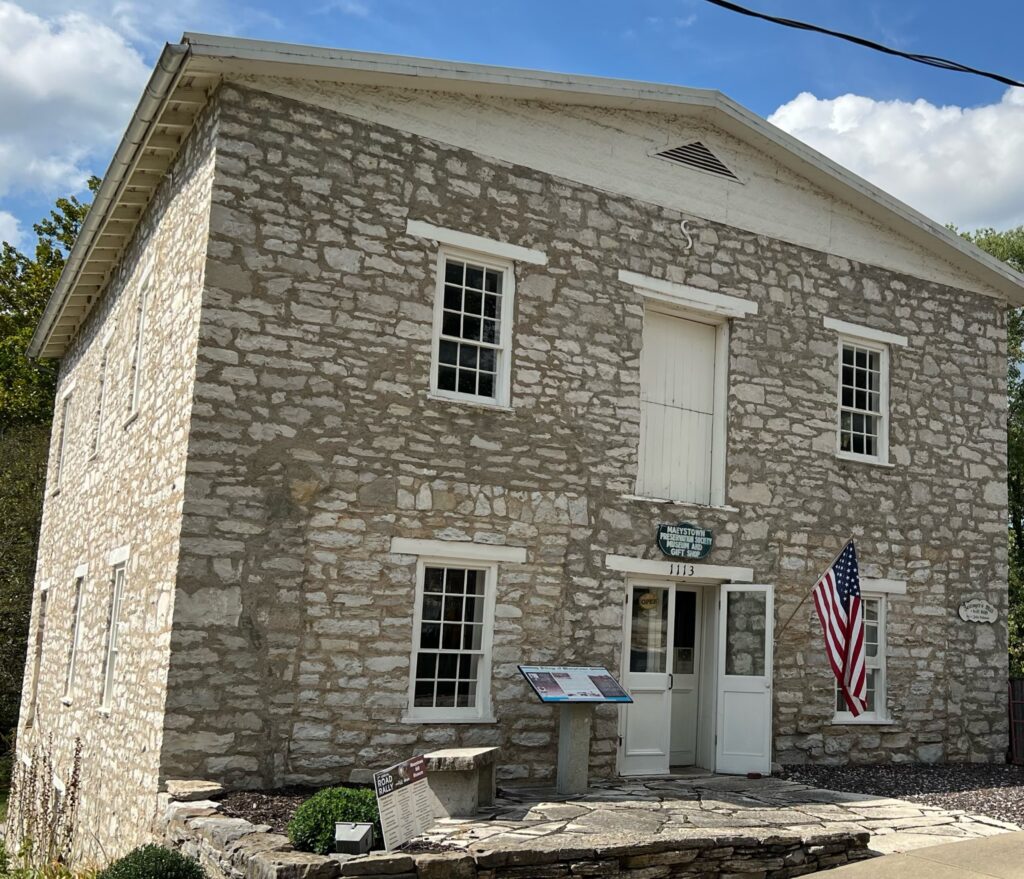
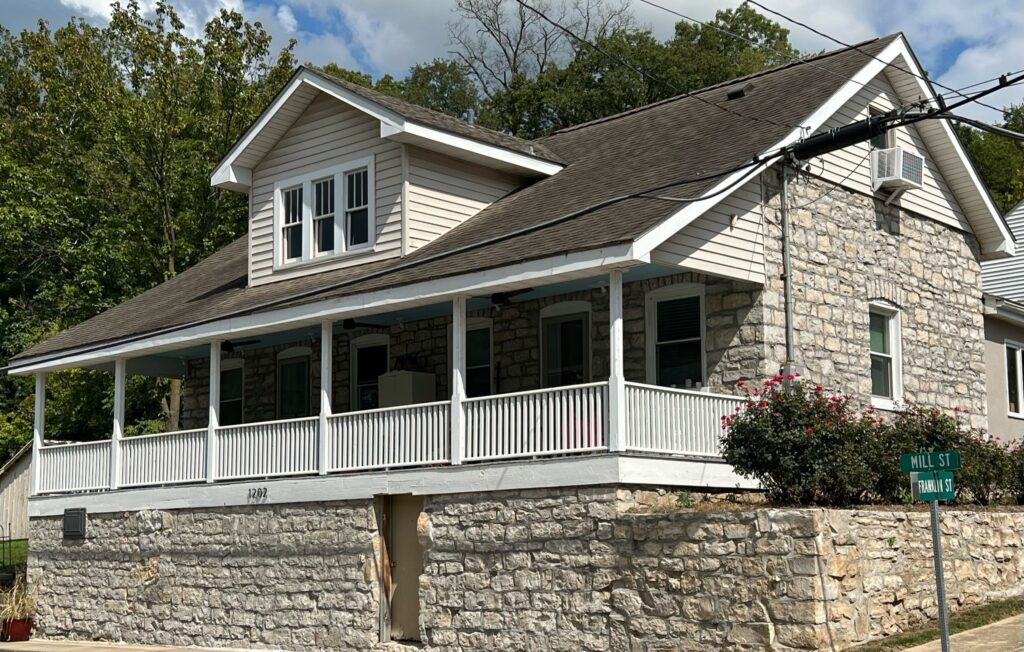
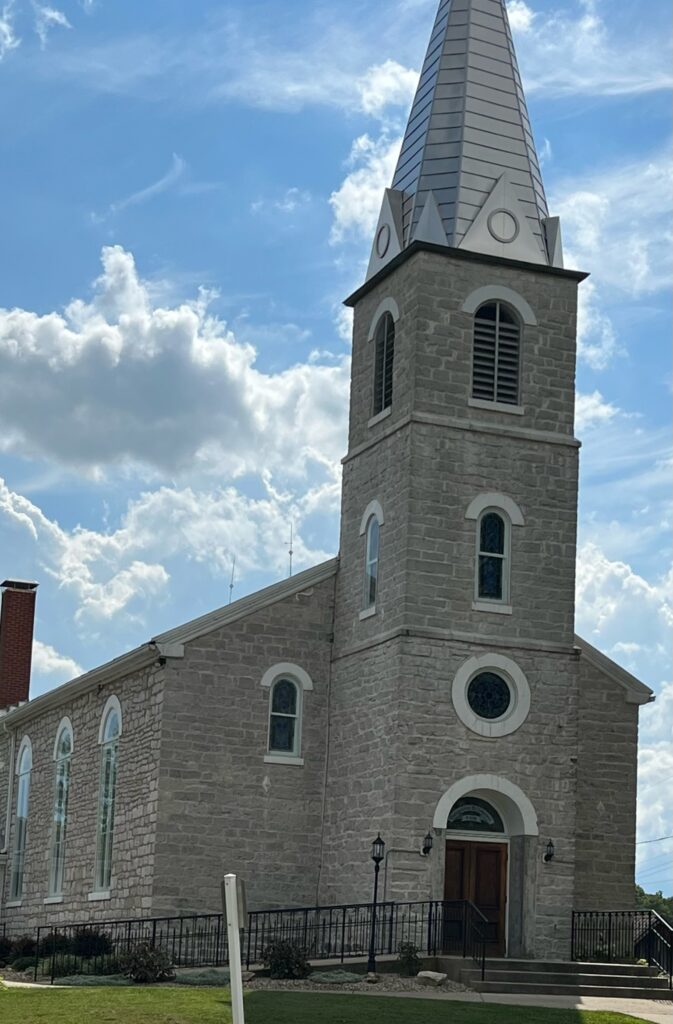
Amazing Maeystown! At least to me. After visiting the all-new city of Valmeyer on top of the bluffs and old Valmeyer down in the flood plains, I was not totally prepared for Maeystown, which is tucked back against the bluffs on high enough ground to beat the floods. So, this portion of the trip became a “tale of two cities”: two very contrasting ones.
I observed in this hilly village, founded by Jacob Maeys in 1852 and settled by German immigrants, that if you don’t have a retaining wall made of limestone blocks, you are in the minority!
Sixty significant structures still exist including: Maey’s log house, St. John UCC, and the stone arch bridge coming into town. Today, busloads come to visit Maeystown’s restaurant, museum, general store, bed & breakfast and other shops. A re-built version of Zeitinger’s 1859 mill has served as the village’s visitor center and museum since 1980.
Maeystown is one of the few Illinois villages that is listed in its entirety on the National Register of Historic
St. Joe – South of Waterloo, IL
Head east for several miles until you reach the hamlet of St. Joe. There you will see the Zion United Church of Christ, an 1860’s structure that anchors this area.
Fort de Chartres – West of Prairie du Rocher, IL
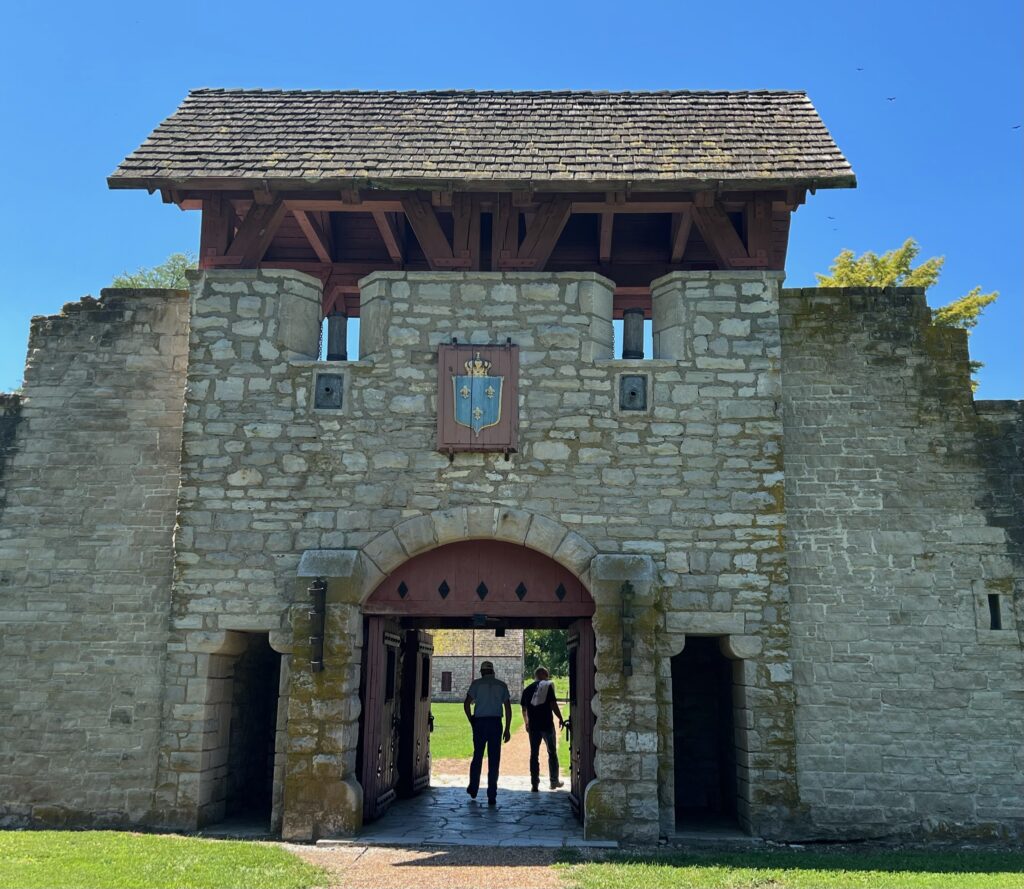
The center of interest in this area has to be the oft rebuilt French Fort de Chartres, which is a few miles west of Prairie du Rocher. Originally built in 1720 and finally re-built of limestone in 1756, it contains what might possibly be the oldest building in Illinois: the fort’s powder magazine. The fort passed from the French to the British as spoils at the end of the French and Indian war in 1763.
By 1900, it was in ruins before being saved one last time and morphed into the outstanding structure that exists today.
The Fort hosts functions throughout the year and is a site to behold for fort groupies like myself because of its excellent condition. It has a museum and interpretive center inside the walls.
Prairie du Rocher, IL
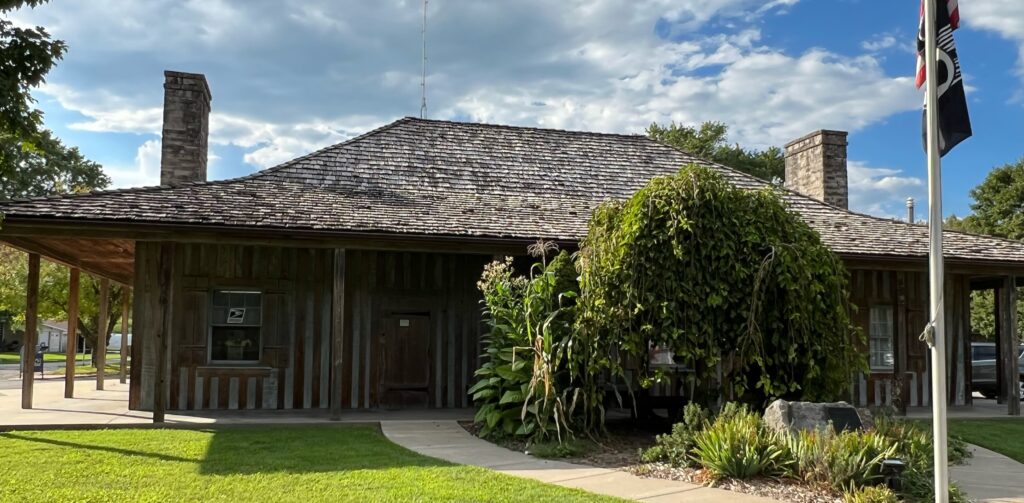
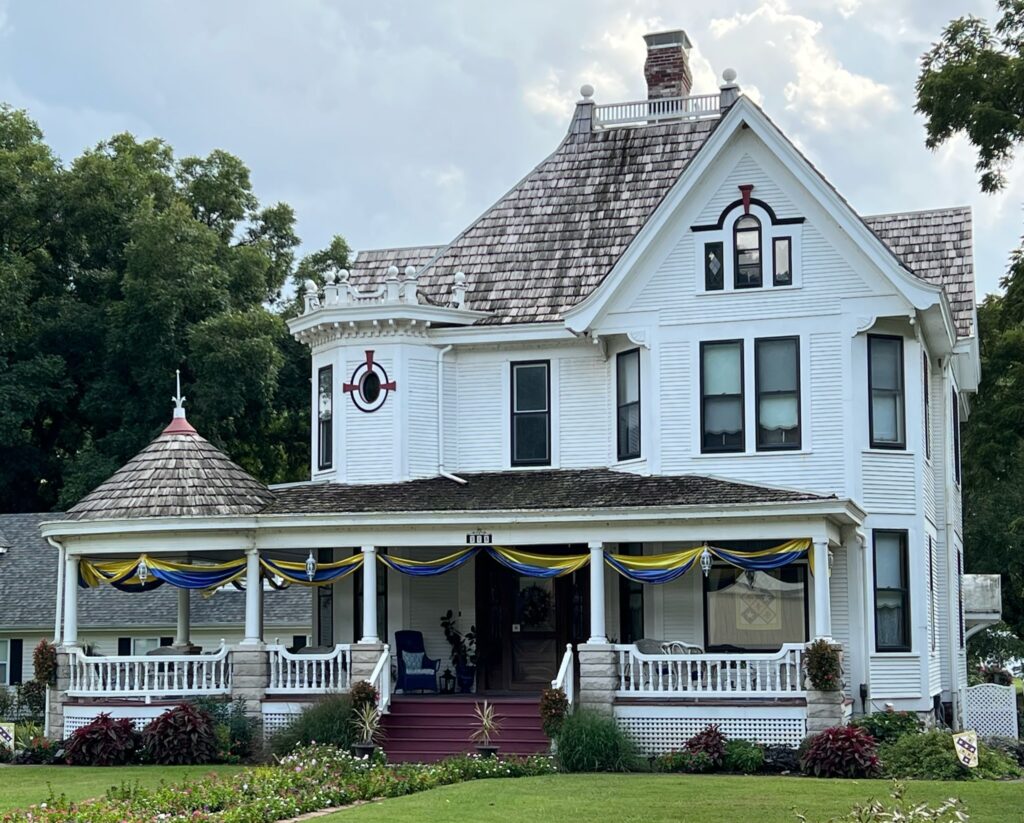
Further south on the Trail, is Prairie du Rocher or “prairie by the rock“, per French translation. It was the fourth European settlement in Illinois and was founded in 1722, shortly after Fort de Chartres.
The village hall was constructed to recreate the historic “post on sil” architectural style so prevalent during the French colonial era. This is a good spot to seek food and drink on the main street and I can recommend Lisa’s from personal experience.
Beside the Village Hall, several other structures will catch your eye, including: the 1800’s Creole House; the Conner B & B, Conner Market, and the 1700’s St. Joseph’s Church, which was inspired by the famous basilicas of Rome.
Jerry F. Costello Lock & Dam – South of Modoc, IL

The most modern structure on the trip was the Jerry F. Costello Lock & Dam, located just upstream from the confluence of the Kaskaskia and Mississippi Rivers. Fishermen were lazily working the waters above the dam on Rally Day.
Barges occasionally pass through and you can get a good look at them from the boat ramp, picnic area and campgrounds or from along the Confluence Heritage Trail.
Fort Kaskaskia & Garrison Hill Cemetery – West of Ellis Grove, IL
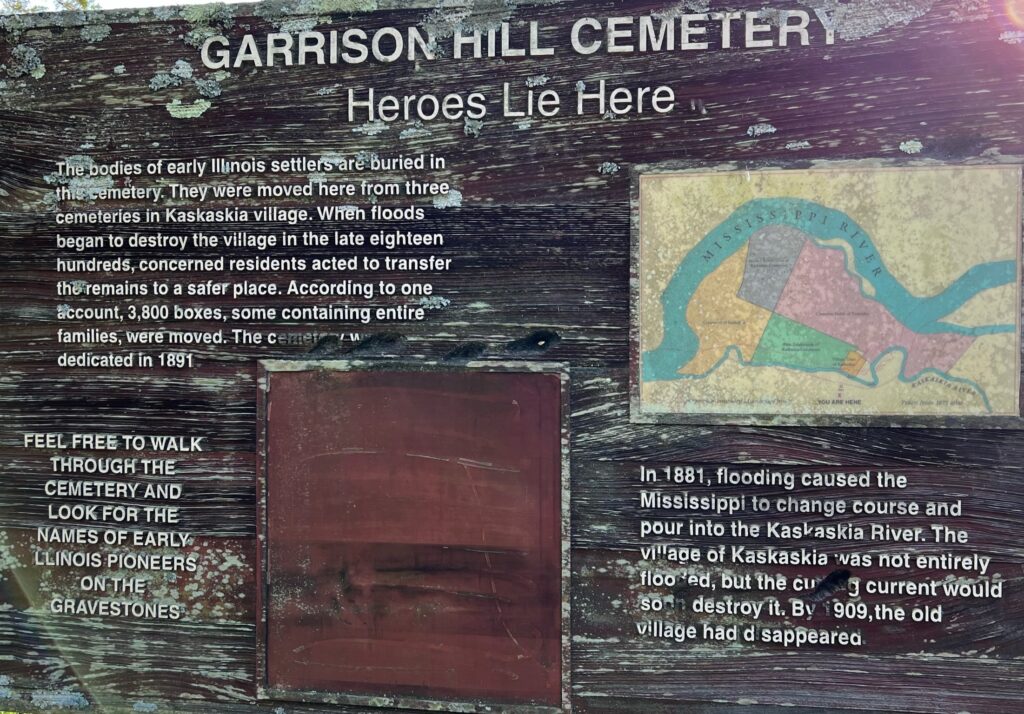
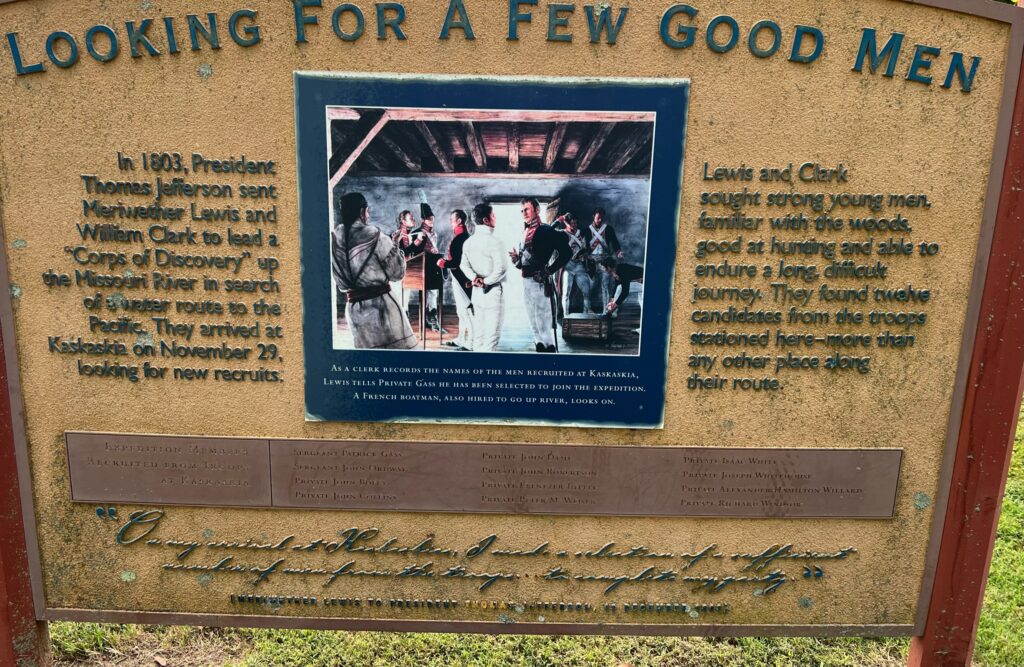
The most southern stop on the trip was the Fort Kaskaskia State Historic Site/Garrison Hill Cemetery, which sat on the bluffs with a great view of the confluence and of the old Kaskaskia Village area.
First built in 1751 and improved in 1759, the fort provided security for the village from the British and their Native American allies. After losing to the British in 1763, the French destroyed the fort and all that remains today are mounds that closely outline the fort’s perimeter.
The Garrison Hill Cemetery is located adjacent to the site of the former fort and contains 3,000 grave sites of remains of folks buried near Kaskaskia Village but moved to higher ground because of flooding that caused the village to be abandoned.
Although not rebuilt, the area was often used for military purposes and Lewis & Clark recruited 12 men from its ranks to join them in the Corps of Discovery that traveled from St. Louis to the Pacific Ocean in 1804.
Monroe County Courthouse – Waterloo, IL

Around 4 p.m., it was time to finish the loop and meet up with other Rally participants at the Monroe County Courthouse in Waterloo. Rally-ers could turn in their passports there and have them entered for prizes as they enjoyed other festivities created for the Rally.
The Waterloo Historic District has 271 buildings, including the County Courthouse, which was originally built in 1832 and replaced in 1853. Major additions have been made in 1908 and 1995.
The best way to see the historic district is with a self-guided walking tour to see the architecture, murals, boutiques, bars and restaurants that grace the downtown, including: the Peterstown House, Ditch’s Tavern, the Bellefontaine House and Spring, and the James Moore Cabin and family cemetery.
With that, it was so long till next year and the Third Annual KCT Road Rally and another dozen sites to be seen.



